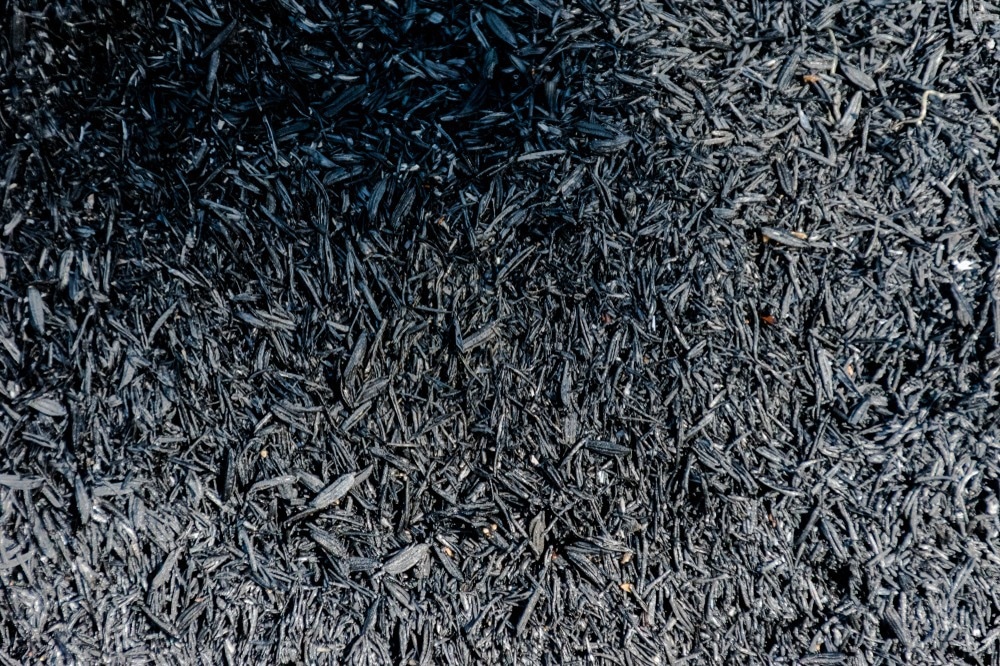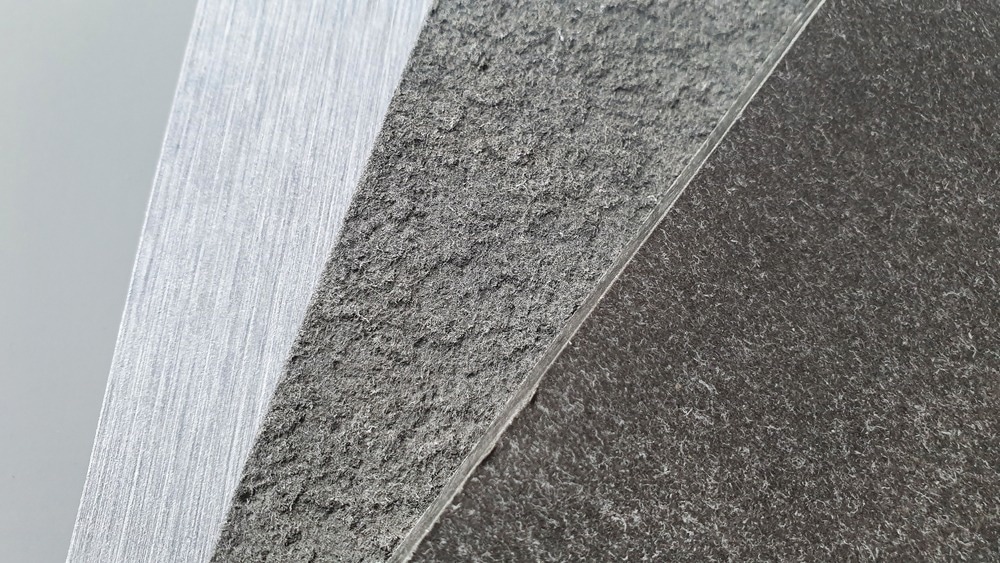The primary application of biochar, a highly porous substance made from plant debris, is to improve soil. However, more recent breakthroughs have paved the way for its use as cladding material. This article considers the use of biochar as a cladding and the latest research being conducted to further improve its performance.

Image Credit: StorKiss/Shutterstock.com
What Advantages does Biochar Offer as a Material?
Biochar is created by the combustion of biomass at temperatures ranging from 400 to 800°C in the absence of air. The method employed is known as pyrolysis. The resulting material possesses relatively high specific surfaces dispersed across numerous nano-, micro-, and mesopores, which are useful for capturing moisture making it an efficient insulating material.
It also has several beneficial properties when employed in manufacturing applications. Biochar can be employed as an additive/replacement in the cement production sector, as well as in the manufacturing of building products..
The Use of Biochar as a Building Material
Biochar's exceptionally low heat conductivity and capacity to absorb moisture up to 5 times its weight are two of its main features. Because of these qualities, biochar is an excellent substance for shielding structures and moderating moisture.
Biochar can be utilized as a supplement for plaster or concrete blocks at a ratio of up to 80% when combined with mud, limestone, and cement mortar. This mixing produces interior walls with outstanding cladding capabilities, capable of keeping relative humidity in a room between 45% and 70% in both summer and winter.

Different cladding materials. Image Credit: Wongsakorn Dulyavit/Shutterstock.com
This not only keeps the air within the apartments from becoming too dry, which can lead to respiratory issues, but it also keeps moisture from accumulating around thermal bridges and on exterior panels, which can contribute to microbial growth.
Application of Biochar Cladding
The application of biochar cladding could be done via the means of specialized rendering equipment or by standard plaster coating techniques. It can be used to replace Styrofoam at thicknesses of up to 20 cm. By utilizing biochar-based cladding material, houses could become very long-term carbon sinks while simultaneously providing a healthier indoor climate.
Preparation Method
A novel study published in the journal Science of the Total Environment focused on the preparation of biochar material for external coating. A total of 24 biochars were generated and described in the research work from six biomass wastes (sugarcane bagasse, chicken manure, etc.) at four reaction temperatures (400-700°C). Based on biochar performance characteristics, grey correlation analysis (GCA) was utilized to identify biochar as a protective cladding for biochar-coated urea (BCU).
Due to its low specific surface area, biochar generated at lower pyrolytic temperatures was determined to be unsuitable as a cladding for BCU. As per the results of grey correlation analysis, biochars produced from the pyrolysis of Phyllostachys pubescens (BP6), vinasse (BV6), and rice straw (BR6) at 600°C were chosen as coating materials for BCU (GCA).
“Made of Air” Industrial Biochar Cladding
A novel startup in Berlin, Made of Air, has created a carbon-sequestering bioplastic composed of forest and farmyard manure that can be utilized for everything from furnishings to exteriors. The materials created from biochar were utilized by this corporation that specializes in materials engineering and sciences.
Made of Air combined biochar with a sugar cane adhesive to make a substance that can be molded and shaped like a standard elastomer. Biochar is developed in a number of processes before being transformed into pellets after being combined with bioplastics. The granules are then employed in standard plastic-forming techniques such as the molding process and may be handled on the same equipment as ordinary plastic.
Research Study
A team of researchers developed Apium-derived biochar loaded with MnFe2O4@C utilizing a calcination method. The purpose of this development was to utilize it as a specialized cladding material for protection against electromagnetic waves operating at lower frequencies. Thermal diffusion was used to migrate the cladding carbon film on MnFe2O4 NPs from biochar, and the biochar was also coated with the ferrite NPs.
Six specimens labeled S1 to S6 were utilized.
The mixture of both dielectric and magnetic loss imbued the matrix with outstanding low-frequency electromagnetic sorption capacity, i.e. the optimized energy absorption frequency was 48.92 dB at 0.78 GHz for only 2.5 mm thickness, which was attributed in detail to interfacial polarization, high magnetic damping potential, and superior impedance matching property.
Owing to its exceptional performance, compact composite matrix, environmental protection, and ease of disintegration, this bio-based ferromagnetic composite offers tremendous potential in the creation of microwave absorbing materials (MAMs).
Is it Environmentally Sustainable?
Adequate biomass pretreatment and management of pyrolysis process conditions such as temperature, pressures, and heating time are critical for producing biochar with acceptable physical characteristics for CO2 adsorption. The sorption process of greenhouse gas emissions on biochar-coated walls may not be effective in the long run because, given the little amount utilized, saturation will occur quickly. It is also inefficient to update wall coatings regularly to ensure continuous soaking.
Aside from testing the endurance and structural features of biochar cladding, the accompanying economic, ecological, and societal benefits of these novel materials should be investigated.
In short, biochar claddings are truly the future. However, the shortcomings should be addressed immediately, and more research articles should be published to inform the general public about the advantages of biochar as a cladding material.
More from AZoBuild: Developing Construction Boards from Waste Products
References and Further Reading
Jennifer Hahn, (2021). Atmospheric CO2 is "our biggest resource," says carbon-negative plastic brand Made of Air. [Online] Available at: https://www.dezeen.com/2021/06/24/carbon-negative-plastic-biochar-made-of-air-interview/
Yin, P. et. al. (2020). Apium-derived biochar loaded with MnFe2O4@C for excellent low-frequency electromagnetic wave absorption. Ceramics International. 46. Available at: https://www.doi.org/10.1016/j.ceramint.2020.02.150.
Hans-Peter Schmidt, (2022).The use of biochar as a building material. [Online] Available at: https://www.biochar-journal.org/en/ct/3
Jia, Y. et. al. (2020). Preparation of biochar as a coating material for biochar-coated urea. Science of the Total Environment, 731, 139063. Available at: https://doi.org/10.1016/j.scitotenv.2020.139063
Gupta, Souradeep & Kua, Harn. (2017). Factors Determining the Potential of Biochar As a Carbon Capturing and Sequestering Construction Material: Critical Review. Journal of Materials in Civil Engineering. 29. 04017086. Available at: https://doi.org.10.1061/(ASCE)MT.1943-5533.0001924.
Disclaimer: The views expressed here are those of the author expressed in their private capacity and do not necessarily represent the views of AZoM.com Limited T/A AZoNetwork the owner and operator of this website. This disclaimer forms part of the Terms and conditions of use of this website.